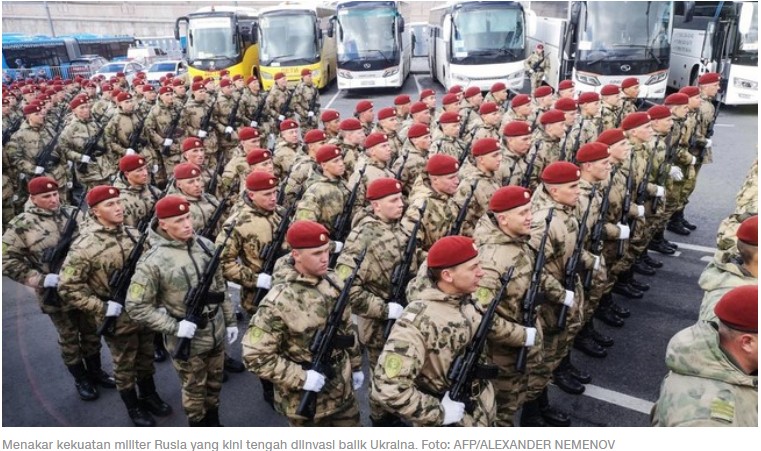
STRATEGIC ASSESSMENT. While Ukraine and Russia have remained territorially deadlocked since the former launched a disappointing counteroffensive in June, a series of escalatory attacks unleashed by a massive Russian air assault has killed dozens of civilians on both sides and brought one Russian border city under an artillery barrage unprecedented in this war. After Russia fired over 150 drones and missiles into cities across Ukraine on December 29, reportedly killing at least forty-one Ukrainians and injuring over 160, the city of Belgorod suffered the deadliest attack on Russian civilians of the nearly two-year war and faced additional bombardment over the following days. Reportedly, twenty-five Russian civilians – including five children, according to Russian sources – were killed, and over one hundred were injured in the initial artillery strike on Belgorod. Russian officials blamed the attack on Ukraine and have described it as an indiscriminate act of terrorism. The first artillery strike came a day after Ukrainian President Volodymyr Zelenskyy promised to bring the war back to Russia following the Russian missile and drone barrage, which Ukrainian and U.S. officials described as the largest such attack of the war. Russia has launched at least four large-scale attacks against Ukraine in recent weeks, firing over 500 missiles and drones since December 29.
While Russia’s broader Belgorod Oblast has been a favored target for Ukraine and Ukraine-backed militias over the course of the war, the civilian toll inflicted on Russia has typically been far more restrained than what was seen on December 30. Most other Russian cities and their civilians have been relatively safe from serious, casualty-inducing attacks prior to Belgorod. Russia has claimed that cluster bombs – which are banned by over one hundred countries for the risk their unexploded munitions pose to civilians – were used in the December 30 Belgorod attack, though this claim has not been verified by independent sources. Prior to the latest series of strikes on the Russian city, action inside Russia’s borders has included raids on smaller towns and villages by pro-Ukrainian and anti-Putin Russian militant groups, assassinations of several influential pro-war public thinkers, and drone attacks inside Moscow, including an attempt on the Kremlin itself. Ukraine may be motivated to increase this pressure heading into the Russian presidential elections in March. Even if the outcome of the contest is all but assured, the Putin regime may be more inclined to boost its public perception during this time — especially in light of the violent repression of a rare, large protest in Baymak, Russia, that broke out after indigenous rights activist Fail Alsynov was sentenced to jail last week. In 2023, he was fined for online criticism of the invasion of Ukraine and is also known for his environmental activism. However, such pressure need not necessarily take the form of deadly, explosive strikes. On January 9, a Ukrainian hacking group linked to state security services reportedly launched a cyber-attack against a Moscow-based internet service provider. The attack – said to be setting the stage for a larger planned attack – was seen as retaliation for Russia knocking out Ukraine’s largest mobile network operator last month, which was said to be the largest Russian cyber-attack of the war.

Russia’s introduction of North Korean munitions to the battlefield poses additional escalatory risk in the eyes of Ukraine’s partners. On January 4, the United States claimed Russia had begun using ballistic missiles and launchers provided by North Korea to fire upon Ukraine, in what National Security Council spokesman John Kirby described as “a significant and concerning escalation.” Recent developments between Russia and North Korea prove how the war has bound Russia more closely together with other relatively isolated U.S. adversaries. A Kremlin spokesperson said Moscow will further its partnership with North Korea “in all areas,” and Russia is also reportedly preparing to sign a new bilateral treaty with Iran at some point in the future to increase military-technological cooperation between the two states. Earlier this week, North Korean Foreign Minister Choi Song Hui led a delegation to Moscow for a multi-day state visit, which included a meeting with his Russian counterpart, Minister of Foreign Affairs Sergei Lavrov.
The intense surge in attacks comes amid popular perceptions that the conflict has devolved into a war of attrition and may even be at an impasse. Last month, the head of Ukraine’s armed forces, General Valerii Zaluzhnyi, described the situation as a “stalemate,” while Kirby announced last week that the United States had suspended security assistance to Ukraine after securing $250 million worth of military aid for its embattled partner on December 27. Any further U.S. aid will require Congressional funding approval, though Congressional Republicans have proven skeptical of the Ukrainian cause and have stated they would condition any further aid on stricter border policies, particularly to restrict migration at the U.S. southern border. However, the Republican leader in the lower U.S. House of Representatives, Speaker Mike Johnson, cast doubt on even that possibility, suggesting hours before a meeting with U.S. President Joe Biden last Wednesday that a compromise on border reform with Democrats would not be possible. Other partners like the United Kingdom appear to be trying to fill the void that the United States could leave, but U.S. aid is undoubtedly the largest single contributor to Ukraine’s defense, and the withdrawal of this support would have a significant impact.
While NATO allies agreed to transfer F-16 fighter jets to the Ukrainian military last year after resisting Ukraine’s requests for much of the war, Danish media has reported that the first six fighter jets may not arrive for another six months, after initial pledges indicated they would arrive by the beginning of 2024. Analysts believe that once they enter the battlefield, F-16s could help Ukraine take out Russian air defenses and thwart the use of glide bombs, which have been used to take out Ukraine’s underground bunkers. Eroding international support for Ukraine, especially among once staunch allies, is surely welcome news for Russia, which may be preparing to launch a new offensive in the coming weeks, according to Russian sources cited by the Institute for the Study of War (ISW). ISW has also assessed that winter temperature drops will create firmer, frozen ground better suited for the deployment of mechanized forces. However, both sides’ vehicle-borne infantry has been substantially neutered by the widespread use of cheap, effective drones. Along the frontlines, soldiers are said to have largely abandoned the use of vehicles like armored personnel carriers, which are more visible to surveillance drones and vulnerable to strikes.





